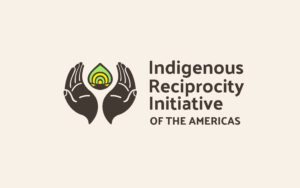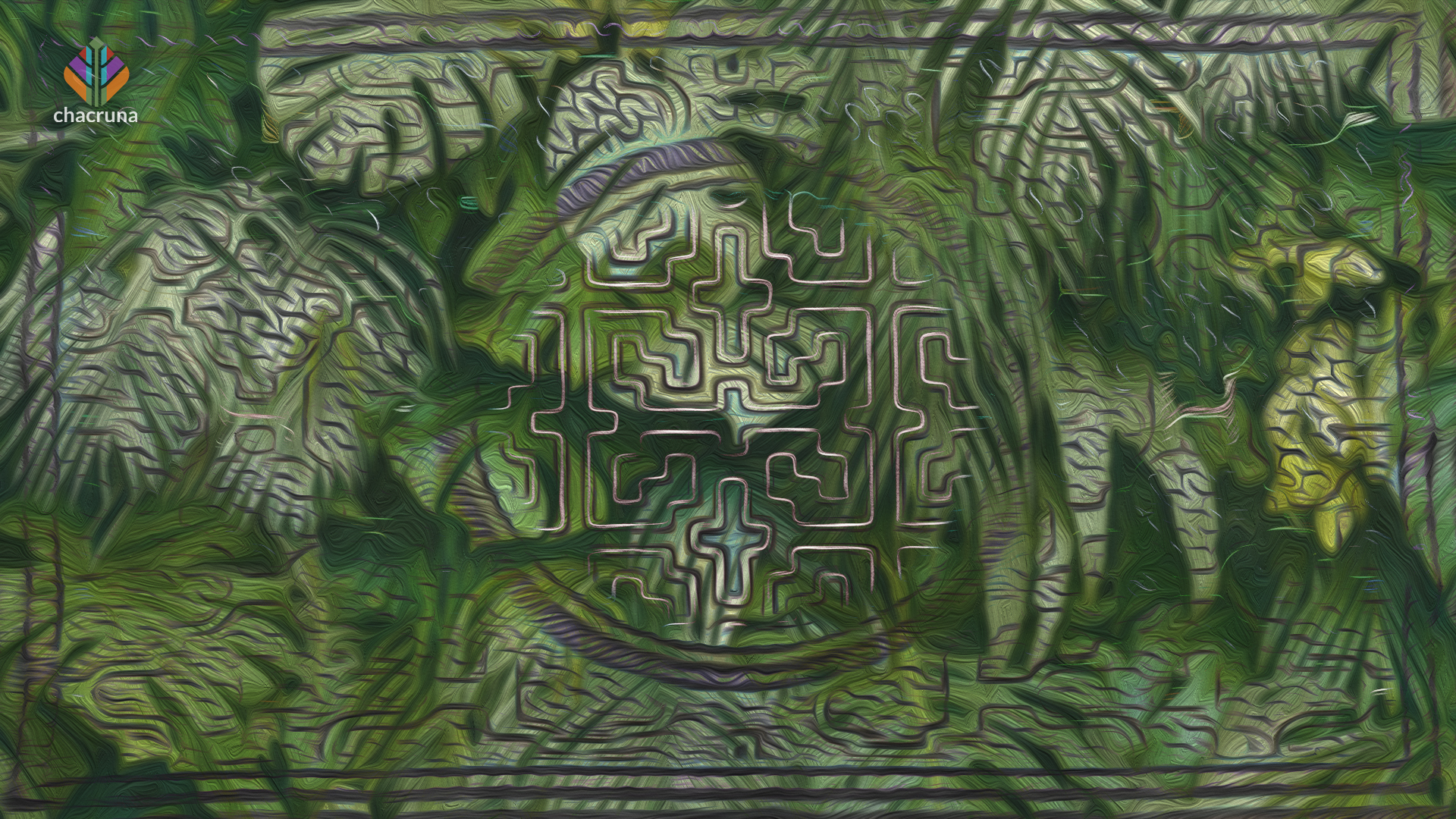- Participation in an Indigenous Amazonian-led Ayahuasca Retreat Associated with Increases in Nature Relatedness – A Pilot Study - March 21, 2024
- A Phenomenology of Subjectively Relevant Experiences Induced by Ayahuasca in Upper Amazon Vegetalismo Tourism - November 9, 2023
- The Pharmacological Interaction of Compounds in Ayahuasca: A Systematic Review - October 26, 2023
Ruffell SG, Gandy S, Tsang W, Lopez R, O’Rourke N, Akhtar A, Netzband N, Hollingdale J, Perkins D, Sarris J (2024) Participation in an indigenous Amazonian-led ayahuasca retreat associated with increases in nature relatedness – a pilot study. Drug Science, Policy and Law, 10. doi:10.1177/20503245241235100
Study Rationale
Anecdotal and qualitative accounts of ayahuasca experiences often feature a strong phenomenological component of nature, with nature-based content and themes commonly described, and traditional Amazonian shamanic practice is also deeply rooted in nature. Ayahuasca has also been implicated in eliciting shifts in people’s relationships, perspectives and sensitivity towards nature, potentially catalysing pro-environmental awareness. To date, there has been little research examining the mechanisms that may underlie such shifts. In addition, while previous studies have highlighted an association between experience with classical psychedelics and nature relatedness, there is a lack of prospective research, and this is the first study to assess the effect of participation in an Indigenous Amazonian shaman-led ayahuasca retreat in the Peruvian Amazon on nature relatedness.
Ayahuasca has … been implicated in eliciting shifts in people’s relationships, perspectives and sensitivity towards nature, potentially catalysing pro-environmental awareness.
Methodology
A prospective, observational, naturalistic study design was used to evaluate participants attending ayahuasca rituals at the Ayahuasca Foundation, located in the Amazon rainforest in Peru, with ayahuasca administered in an adapted traditional Shipibo format. The retreat length varies, from ten days to one month. Participants were offered either four, six, nine, or eleven ayahuasca ceremonies, although participation was voluntary. The exact number of ceremonies attended was recorded (with a mean of 6.31 ceremonies attended). A total of 51 participants were enrolled in total after meeting the retreat centre’s eligibility criteria. Following lowered retention rates post retreat and pairwise deletion approach used for analysis, the final sample included in this study was 43. Participants completed inventories before their first ceremony and the morning after their final ceremony. Nature relatedness was assessed with the short-form nature relatedness scale (NR-6) (Nisbet & Zelenski, 2013) and the extended inclusion of nature in self-scale (EINS) (Martin & Czellar, 2016) and indicators of depression, anxiety and stress assessed via the depression, anxiety and stress scale (DASS-21) (Henry & Crawford, 2005).

Discover the Indigenous Reciprocity Initiative of the Americas
Summary of Results
Participation in Amazonian ayahuasca retreats was associated with significant improvements on all measures apart from DASS-Anxiety, with medium to large effect sizes (see Table 1 for descriptive and inferential statistics). Ayahuasca retreat participation was associated with reductions in depression and stress, but not anxiety, and increases in nature relatedness. A statistically significant negative correlation with moderate effect size was found between increases in nature relatedness and decreased scores in stress after attending the ayahuasca retreats (see Table 2 for primary correlation analyses). The findings suggest that participation in such retreats function as a multidimensional intervention, evoking significant changes in a variety of domains.
Table 1
Descriptive and inferential statistics for research measures as a function of time point (pre- vs. post-Amazonian ayahuasca retreat attendance)
| Pre | Post | |||
| Measure (n) | M (SD) | M (SD) | t (df) | p |
| NR-6 (43) | 3.98 (0.80) | 4.30 (0.62) | -3.66 (42) | <.001** |
| EINS (34)* | 18.65 (6.55) | 23.12 (5.21) | -5.54 (33) | <.001** |
| DASS-DEP (43) | 9.07 (8.30) | 4.09 (5.09) | 4.29 (42) | <.001** |
| DASS-ANX (43) | 9.12 (7.28) | 9.86 (7.37) | -0.61 (42) | .548 |
| DASS-STR (43) | 14.79 (9.08) | 8.88 (6.61) | 4.14 (42) | <.001** |
*Of note, prorating was conducted for 20% or less of missing data for individual participants. Together from pre and post testing, there were 14% of missing data from the NR-6, 17% from the DASS-21, and 21% from EINS, prior prorating. No prorating could be conducted for the four item EINS as each item missing represented 25% (i.e. >20%) missing data for the scale.
Table 2
Primary correlation analyses of change scores
| DASS-DEP n = 42 | DASS-ANX n = 42 | DASS-STR n = 42 | EINS n = 34 | |
| NR-6 n = 43 | -.108 | -.042 | -.383* | .471** |
| EINS n = 34 | -.305 | -.066 | -.594** |
Integration with Extant Literature
The finding that participation in Amazonian ayahuasca retreats was associated with a significant increase in nature relatedness (as assessed by both the NR-6 and the EINS) builds on previous research reporting links between ayahuasca usage and shifts in individuals’ relationships with nature (see Table 1). For the NR-6, the mean baseline nature relatedness of participants in this study was high (3.98 out of 5), with a mean nature relatedness of 4.30 post-ayahuasca retreat participation (comprising a mean 8.04% increase). In contrast, a number of pooled studies reported that mean baseline scores ranged from 3 to 3.44 in Canadian student and community populations sampled (Nisbet & Zelenski, 2013).
Similar high mean baseline levels of nature relatedness (4.13) were reported in another study on a population of ayahuasca-naïve individuals prior to participation in ayahuasca ceremonies in a naturalistic context, although in contrast to the present study, no significant changes in nature relatedness (4.19) were observed (Perkins et al., 2022). This may partly be down to differences in context, with the sample recruited from two independent spiritual ayahuasca organisations (self-described as churches) in North America, with ayahuasca administered in a neo-shamanic mestizo ceremonial setting at two independent ceremony sites. This contrasts with the present study, where ayahuasca was exclusively administered in an Indigenous Shipibo-shaman led context in a biodiverse, nature-rich Amazonian rainforest setting, with the option of an extended stay in this setting. One recently published study reported that participation in ayahuasca ceremonies while attending an ayahuasca retreat centre was associated with significant increases in nature relatedness and nature appreciation at one-week and one-month follow-up post participation. It should be noted that the context encompassing ayahuasca usage in the latter study shared significant overlap with the present study, with multiple (2–7) ayahuasca ceremonies led by Shipibo shamans, and an extended (5–12 night) stay at a retreat centre located in an area of biodiverse tropical rainforest (Aday et al., 2023).
Traditional, Indigenous shaman led ayahuasca ceremonies are inclined towards nature-based content and themes and this may act as a mediating influence that affects people’s relationship with nature, aside from the direct pharmacodynamic effects of ayahuasca itself.
Given the retreat setting involved in drug administration, it could be argued that non-pharmacological factors contributed to these effects. However, shifts in individuals’ relationship with nature and the environment have also been documented when synthetically manufactured psychedelics have been administered in modern research laboratories (Lyons & Carhart-Harris, 2018; Studerus et al., 2011)—suggesting that these changes are likely driven, at least in-part, by direct drug effects. It remains to be seen how one’s expectations for connecting with nature and motivations for usage contribute to changes in one’s relationship with nature after taking a psychedelic. However, it is important to acknowledge that contact with biodiverse or nature-rich environments may promote greater nature relatedness (Dornhoff et al., 2019; Hamlin & Richardson, 2022; Wyles et al., 2019), and nature-based experiences or interventions of greater time duration are more likely to elicit increases in nature relatedness (Barrable & Booth, 2020; Braun & Dierkes, 2017; Schultz & Tabanico, 2007). Furthermore, given limited electricity and a lack of phone signal or internet access at the retreat centre, retreat participants would have been forced to disconnect from technology for the duration of their time there. This may have facilitated greater connection to nature while attending the retreat, with usage of electronic entertainment technology and smartphones negatively associated with nature relatedness (Larson et al., 2018; Pergams & Zaradic, 2006; Richardson et al., 2018). Traditional, Indigenous shaman led ayahuasca ceremonies are inclined towards nature-based content and themes (Fernández & Fábregas, 2014; Weiss et al., 2021) and this may act as a mediating influence that affects people’s relationship with nature, aside from the direct pharmacodynamic effects of ayahuasca itself (Harms, 2021).
Find more information on the upcoming Psychedelic Culture Conference.
Changes in depression, anxiety and stress and association with nature relatedness change
A statistically significant negative correlation with moderate effect size was found between changes in nature relatedness and changes in stress scores on the DASS-21 scale, but no such association was found with the other scale subdimensions assessing depression and anxiety. Nature relatedness has been found to be predictive of adaptive emotion regulation strategies, which in turn has been found to predict a reduction in perceived stress (Bakir-Demir et al., 2021), with individuals expressing lower levels of nature relatedness more likely to exhibit poorer emotional regulation (Richardson & McEwan, 2018), therefore making them more vulnerable to stress. Higher levels of nature relatedness have been associated with greater psychological resilience (Ingulli & Lindbloom, 2013), this being a key stress-coping mechanism. Similarly, nature relatedness was positively associated with vitality during stressful periods among a cohort of students in another study (Nisbet et al., 2011). Other research has found nature relatedness to be more consistently associated with measures assessing happiness, positive affect, and personal growth than depression and negative affect, particularly after controlling for general connectedness (Zelenski & Nisbet, 2014). The only other published prospective study that has examined a potential link between changes in nature relatedness elicited by psychedelic administration and depression found no correlation, but this study was limited by a small sample size (n = 7) (Lyons & Carhart-Harris, 2018). Further research into how reconnecting with nature might lessen the effects of stress, anxiety and depression is warranted (Nisbet et al., 2011). While the potential implications of enhancing nature relatedness through psychedelic administration has largely been overlooked until recent times, it has been argued that maximising enhancement of nature relatedness when administering psychedelics may constitute an important supplemental pathway to improved mental health outcomes associated with their usage (Gandy et al., 2020).
While significant changes in DASS-Depression and DASS-Stress were found following ayahuasca retreat participation, no significance was observed for the DASS-Anxiety subscale. This may be due to the DASS-21 assessing experiences over the course of the retreat, which may be anxiety provoking for various reasons, with such anxiety likely being more common among more psychedelically naïve attendees (Noorani, 2021). Similar findings have been reported in other studies employing the DASS-21 to assess the effect of ayahuasca usage on mental health outcomes, with a lack of significant change in anxiety reported following ayahuasca usage (Uthaug et al., 2018). Another study reported less pronounced changes in DASS-Anxiety in comparison to DASS-Depression and DASS-Stress following administration of an ayahuasca analogue to clinically depressed patients, with these changes also being more transient (van Oorsouw et al., 2022).
Study Relevance
Nature relatedness has been linked to better overall mental and physical health (Barragan-Jason et al., 2023) and strongly associated with eudaimonic well-being (for a review, see Pritchard et al. (2020), exceeding the association between the latter and socio-economic status in one study (Martin et al., 2020). It has been associated with lower levels of both state and trait anxiety (Martyn & Brymer, 2016), and of mental distress and antidepressant medication prescription usage (White et al., 2021). It is also associated with greater contact with nature, while being an important mediator for some of the benefits to mood and cognition yielded by the latter (for a review, see Gandy et al., 2020), and it is a key predictor of pro-nature attitudes and behaviours (Barragan-Jason et al., 2023; Martin et al., 2020; Whitburn et al., 2020; Zylstra et al., 2014). However, human connection to nature is being increasingly eroded on a number of different fronts (Gandy et al., 2020), and it has been suggested that a reduced capacity for nature contact and connection has detrimental implications for health, well-being, and propensity towards experiencing positive emotions (Soga & Gaston, 2016).
This pilot study tentatively suggests that participation in ceremonial ayahuasca retreats in the Amazon rainforest may increase individuals’ psychological connection to nature, which may be associated with reductions in stress, mindful of methodological limitations.
Nature relatedness appears to be a deeply held and stable trait (Dornhoff et al., 2019; Nisbet et al., 2009, 2011; Schultz et al. 2004), and resistant to sustained change (Nisbet, 2011; Wright & Matthews, 2015). While there are a range of conventional nature relatedness enhancing interventions, these may be time and resource heavy and variable in their effectiveness, with a need for reliable and robust interventions (Richardson & Sheffield, 2017). This pilot study tentatively suggests that participation in ceremonial ayahuasca retreats in the Amazon rainforest may increase individuals’ psychological connection to nature, which may be associated with reductions in stress, mindful of methodological limitations. The potential synergistic or additive benefits of the nature-rich Amazonian rainforest retreat setting and other contextual factors such as the disconnection from technology and the nature-orientated shamanic context in influencing nature relatedness in comparison to a Western clinical context warrants further attention.
Further research should seek to elucidate to what degree this shift in individuals’ connection to nature is sustained and reflected in life changes, further explore the specific factors that mediate this shift, and how it might be enhanced. Given that a growing disconnection from nature is implicated with both environmentally damaging behaviour and poor psychological health (Conn, 1998; Soga & Gaston, 2016), reversing this trend could help promote synergistic improvements in human and planetary health (Ives et al., 2018; Martin et al., 2020; Zylstra et al., 2014).

Shop our Collection of Psychedelic T-Shirts.
References
Aday JS, Bloesch EK, Davis AK, et al. (2023) Effects of ayahuasca on gratitude and relationships with nature: An open-label, naturalistic study. Journal of Psychoactive Drugs.
Bakir-Demir T, Berument SK, Akkaya S (2021) Nature connectedness boosts the bright side of emotion regulation, which in turn reduces stress. Journal of Environmental Psychology 76: 101642.
Barrable A, Booth D (2020) Increasing nature connection in children: A mini review of interventions. Frontiers in Psychology 11: 492.
Barragan-Jason G, Loreau M, Mazancourt CD, et al. (2023) Psychological and physical connections with nature improve both human well-being and nature conservation: A systematic review of meta-analyses. Biological Conservation 277: 109842.
Braun T, Dierkes P (2017) Connecting students to nature–how intensity of nature experience and student age influence the success of outdoor education programs. Environmental Education Research 23: 937–949.
Conn S (1998) Living in the earth: Ecopsychology, health and psychotherapy. The Humanistic Psychologist 26: 179–198.
Dornhoff M, Sothmann J-N, Menzel S, et al. (2019) Nature relatedness and environmental concern of young people in Ecuador and Germany. Frontiers in Psychology 10: 453.
Fernández X, Fábregas JM (2014) Experience of treatment with ayahuasca for drug addiction in the Brazilian Amazon. In: Labate B, Cavnar C (eds) The Therapeutic Use of Ayahuasca. Berlin: Springer-Verlag, 161–183.
Gandy S, Forstmann M, Carhart-Harris RL, et al. (2020) The potential synergistic effects between psychedelic administration and nature contact for the improvement of mental health. Health Psychology Open 7(2): 1–21.
Hamlin I, Richardson M (2022) Visible garden biodiversity is associated with noticing nature and nature connectedness. Ecopsychology 14(2): 111–117.
Harms A (2021) Accidental environmentalism: Nature and cultivated affect in European neoshamanic ayahuasca consumption. Anthropology of Consciousness 32(1): 55–80.
Henry JD, Crawford JR (2005) The short-form version of the depression anxiety stress scales (DASS-21): Construct validity and normative data in a large non-clinical sample. British Journal of Clinical Psychology 44(2): 227–239.
Ingulli K, Lindbloom G (2013) Connection to nature and psychological resilience. Ecopsychology 5(1): 52–55.
Ives CD, Abson DJ, von Wehrden H, et al. (2018) Reconnecting with nature for sustainability. Sustainability Science 13: 1389–1397.
Larson LR, Szcytko R, Bowers EP, et al. (2018) Outdoor time, screen time, and connection to nature: Troubling trends among rural youth? Environment and Behavior 51: 966–991.
Lyons T, Carhart-Harris RL (2018) Increased nature relatedness and decreased authoritarian political views after psilocybin for treatment-resistant depression. Journal of Psychopharmacology 32: 811–819.
Martin C, Czellar S (2016) The extended inclusion of nature in self scale. Journal of Environmental Psychology 47: 181–194.
Martin L, White MP, Hunt A, et al. (2020) Nature contact, nature connectedness and associations with health, well-being and pro-environmental behaviours. Journal of Environmental Psychology 68: 101389.
Martyn P, Brymer E (2016) The relationship between nature relatedness and anxiety. Journal of Health Psychology 21(7): 1436–1445.
Nisbet EKL (2011) A Nature Relatedness Intervention to Promote Happiness and Environmental Concern. PhD thesis, Carleton University, Ottawa, Ontario, Canada.
Nisbet EK, Zelenski JM, Murphy SA (2009) The nature relatedness scale: Linking individuals’ connection with nature to environmental concern and behavior. Environment and Behavior 41(5): 715–740.
Nisbet EK, Zelenski JM, Murphy SA (2011) Happiness is in our nature: Exploring nature relatedness as a contributor to subjective well-being. Journal of Happiness Studies 12(2): 303–322.
Nisbet EK, Zelenski JM (2013) The NR-6: A new brief measure of nature relatedness. Frontiers in Psychology 4: 13.
Noorani T (2021) Containment matters: Set and setting in contemporary psychedelic psychiatry. Philosophy, Psychiatry, & Psychology 28(3): 201–216.
Pergams OR, Zaradic PA (2006) Is love of nature in the US becoming love of electronic media? 16-year downtrend in national park visits explained by watching movies, playing video games, internet use, and oil prices. Journal of Environmental Management 80(4): 387–393.
Perkins D, Pagni BA, Sarris J, et al. (2022) Changes in mental health, wellbeing and personality following ayahuasca consumption: Results of a naturalistic longitudinal study. Frontiers in Pharmacology 26(13): 884703.
Pritchard A, Richardson M, Sheffield D, et al. (2020) The relationship between nature connectedness and eudaimonic well-being: A meta-analysis. Journal of Happiness Studies 21: 1145–1167.
Richardson M, McEwan K (2018) 30 Days wild and the relationships between engagement with nature’s beauty, nature connectedness and well-being. Frontiers in Psychology 9: 1500.
Richardson M, Hussain Z, Griffiths MD (2018) Problematic smartphone use, nature connectedness, and anxiety. Journal of Behavioral Addictions 7(1): 109–116.
Richardson M, Sheffield D (2017) Three good things in nature: Noticing nearby nature brings sustained increases in connection with nature. PsyEcology 8(1): 1–32.
Schultz PW, Shriver C, Tabanico J, et al. (2004) Implicit connections with nature. Journal of Environmental Psychology 24: 31–42.
Schultz PW, Tabanico J (2007) Self, identity, and the natural environment: Exploring implicit connections with nature. Journal of Applied Social Psychology 37: 1219–1247.
Soga M, Gaston KJ (2016) Extinction of experience: The loss of human-nature interactions. Frontiers in Ecology and the Environment 14: 94–101.
Studerus E, Kometer M, Hasler F, et al. (2011) Acute, subacute and long-term subjective effects of psilocybin in healthy humans: A pooled analysis of experimental studies. Journal of Psychopharmacology 25(11): 1434–1452.
Uthaug MV, van Oorsouw K, Kuypers KPC, et al. (2018) Sub-acute and long-term effects of ayahuasca on affect and cognitive thinking style and their association with ego dissolution. Psychopharmacology (Berl) 235(10): 2979–2989.
van Oorsouw K, Toennes SW, Ramaekers JG (2022) Therapeutic effect of an ayahuasca analogue in clinically depressed patients: A longitudinal observational study. Psychopharmacology (Berl) 239(6): 1839–1852.
Weiss B, Miller JD, Carter NT, et al. (2021) Examining changes in personality following shamanic ceremonial use of ayahuasca. Scientific Reports 11: 6653.
Whitburn J, Linklater W, Abrahamse W (2020) Meta-analysis of human connection to nature and proenvironmental behavior. Conservation Biology 34(1): 180–193.
White MP, Elliott LR, Grellier J, et al. (2021) Associations between green/blue spaces and mental health across 18 countries. Scientific Reports 11: 8903.
Wright P, Matthews C (2015) Building a culture of conservation: Research findings and research priorities on connecting people to nature in parks. Parks 21(2): 11–24.
Wyles KJ, White MP, Hattam C, et al. (2019) Are some natural environments more psychologically beneficial than others? The importance of type and quality on connectedness to nature and psychological restoration. Environment and Behavior 51(2): 111–143.
Zelenski JM, Nisbet EK (2014) Happiness and feeling connected: The distinct role of nature relatedness. Environment and Behavior 46(1): 3–23.
Zylstra MJ, Knight AT, Esler KJ, et al. (2014) Connectedness as a core conservation concern: An interdisciplinary review of theory and a call for practice. Springer Science Reviews 2: 119–143.
Take a minute to browse our stock:
Did you enjoy reading this article?
Please support Chacruna's work by donating to us. We are an independent organization and we offer free education and advocacy for psychedelic plant medicines. We are a team of dedicated volunteers!
Can you help Chacruna advance cultural understanding around these substances?

















